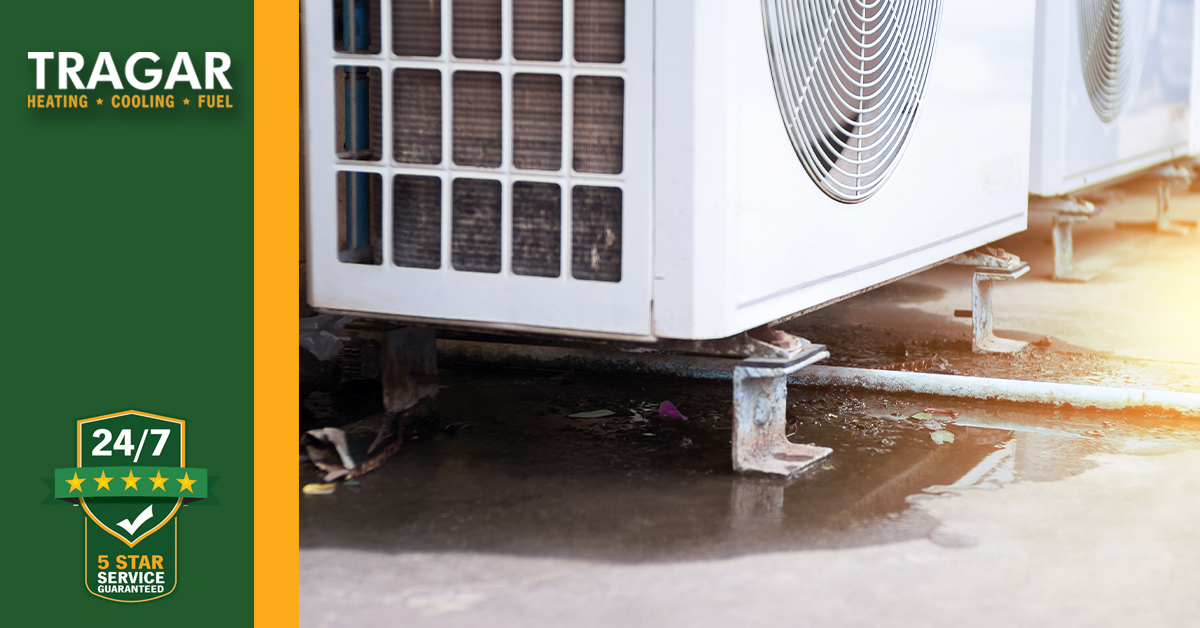 This year has brought more than its share of extreme weather, including several devastating hurricanes and historic flooding in many areas of the country. In August, Long Island saw record rainfall that flooded homes, businesses, and highways… and left behind millions of dollars of damage.
This year has brought more than its share of extreme weather, including several devastating hurricanes and historic flooding in many areas of the country. In August, Long Island saw record rainfall that flooded homes, businesses, and highways… and left behind millions of dollars of damage.
With hurricanes and “100-year storms” happening with increasing regularity, it’s wise to be prepared for potential flooding. This includes knowing what to do if your HVAC system sustains flood damage.
Are HVAC Systems Waterproof?
Some parts of your HVAC system are waterproof or water resistant, while other parts are not. It’s important to know which are which, and what to do if your unit experiences water intrusion or flooding.
Can HVAC Systems Get Wet?
The outdoor unit containing your compressor and condenser is designed to be waterproof. It is corrosion-resistant and tightly sealed against the elements. An outdoor unit can withstand even the strongest downpours. You should be concerned, however, if the unit is damaged by a tree limb or storm debris, or if the unit sits in floodwater.
The indoor portions of your system like your air handler, refrigeration unit, furnace, and ductwork are not typically designed to be watertight. So, if the part of your home in which they are located floods, they will likely sustain damage.
What Happens If Water Gets Into an HVAC System?
If water gets into a part of your HVAC system that wasn’t designed to get wet, it can cause substantial damage. Moisture is no friend to metal parts and electrical connections… it can cause corrosion, electrical issues, and mold.
What Happens If an AC Unit Gets Flooded?
If your air conditioning unit or other parts of your HVAC system are submerged in water for any length of time, damage can be significant or catastrophic. Water can damage or ruin your condenser, circuits, fan, and other crucial parts. Some flood damaged units may be repairable, but many others will need to be replaced altogether.
How Do You Fix Flooded Ductwork?
After a flood, do not turn on your system until a qualified HVAC technician can assess your ducts to see if they experienced a water incursion. Flooded ductwork can harbor chemical contaminants, mold, bacteria, viruses, and other threats to your family’s health.
If water gets into your ductwork, it may be necessary to replace it. Thoroughly cleaning and decontaminating flooded ductwork can be cost prohibitive if not nearly impossible in certain conditions. Even if your ductwork is salvageable, you should strongly consider replacing the insulation surrounding it.
What Should I Do If My HVAC System Floods?
To reduce the likelihood of damage to a flooded HVAC system, it is important to take action immediately. Turn off the thermostat and cut power at the breaker panel. Avoid running the system until it is inspected by an HVAC professional who can assess flood damage and tell you what repairs are necessary before you can safely use the system again.
Your HVAC tech will check all aspects of your system inside and out. This will include the blower, coils, compressor, fans, and wiring. They will also check your ductwork to ensure there has been no water intrusion.
There is always a chance you will need to replace all or some of the system’s components. So, it is wise to know what HVAC damage that your homeowner’s or flood insurance will cover – even before that first raindrop falls. That way, you are prepared if your system is damaged.
If Your System Floods, Trust Tragar to Get You Up and Running Again
After a flood, you can trust Tragar Home Services – Long Island’s home heating and cooling specialist. We can perform full-service evaluation, installation, maintenance, and repair on a wide variety of HVAC systems. We also deliver Bioheat® fuel to keep you warm all winter long. Contact us today to schedule an appointment.

